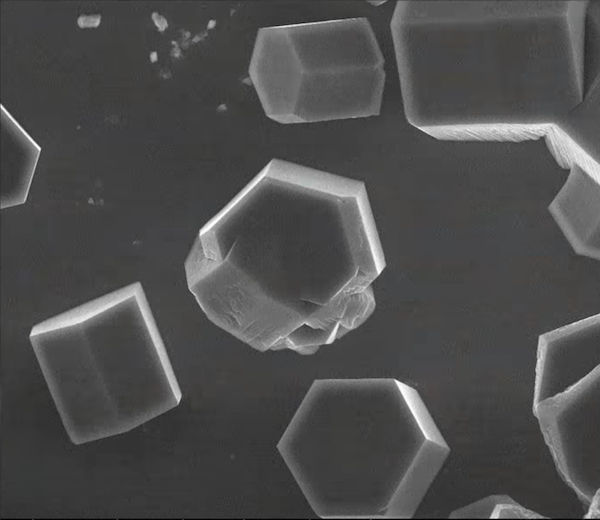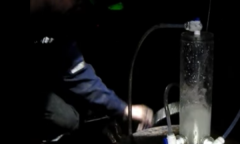By Vishal Goel, | December 22, 2016

The images of the first steps of cloud formation were taken through a microscope. (YouTube)
US-based scientists have witnessed, at the sub-micrometre scale in the laboratory, the birth of crystals that come up together to form atmospheric ice clouds. By replicating the various atmospheric conditions like temperature, pressure, and humidity in a chamber, scientists witnessed water vapor forming ice into a tiny mineral particle, a process known as heterogeneous ice nucleation.
Like Us on Facebook
The images of the first steps of cloud formation were taken through a microscope. Researchers observed the process in unprecedented detail, creating time-lapse videos of the first few seconds when a particle attracts water vapor and forms ice crystals that become the core of ice clouds.
There are two types of clouds; one that reflects the sun's light keeping the planet cool and the other that absorb the Earth's radiation heating the planet. The latter is the case for ice clouds that use a complex chemistry of airborne particles to serve as the birthplace of the ice crystals.
"This is one of the most critical but least understood parts of the process of how cold clouds form," said Bingbing Wang, a scientist formerly with the Environmental Molecular Sciences Laboratory at the Department of Energy's Pacific Northwest National Laboratory.
According to Wang, who is now a professor at Xiamen University in China, the fundamental process of how ice grows is relatively well-known and understood, but the process of ice nucleation - that moment when the first group of molecules comes together - remains a big challenge.
Alexander Laskin, a leader of the EMSL group, along with scientists from Lawrence Berkeley National Laboratory, Stony Brook University, and PNNL came together to take a close-up look at the initial steps of ice cloud formation. The team described the work in the November 21 issue of Physical Chemistry Chemical Physics.
Read more about how the experiment was carried out here.
-
Use of Coronavirus Pandemic Drones Raises Privacy Concerns: Drones Spread Fear, Local Officials Say

-
Coronavirus Hampers The Delivery Of Lockheed Martin F-35 Stealth Fighters For 2020

-
Instagram Speeds Up Plans to Add Account Memorialization Feature Due to COVID-19 Deaths

-
NASA: Perseverance Plans to Bring 'Mars Rock' to Earth in 2031

-
600 Dead And 3,000 In The Hospital as Iranians Believed Drinking High-Concentrations of Alcohol Can Cure The Coronavirus

-
600 Dead And 3,000 In The Hospital as Iranians Believed Drinking High-Concentrations of Alcohol Can Cure The Coronavirus

-
COVID-19: Doctors, Nurses Use Virtual Reality to Learn New Skills in Treating Coronavirus Patients











